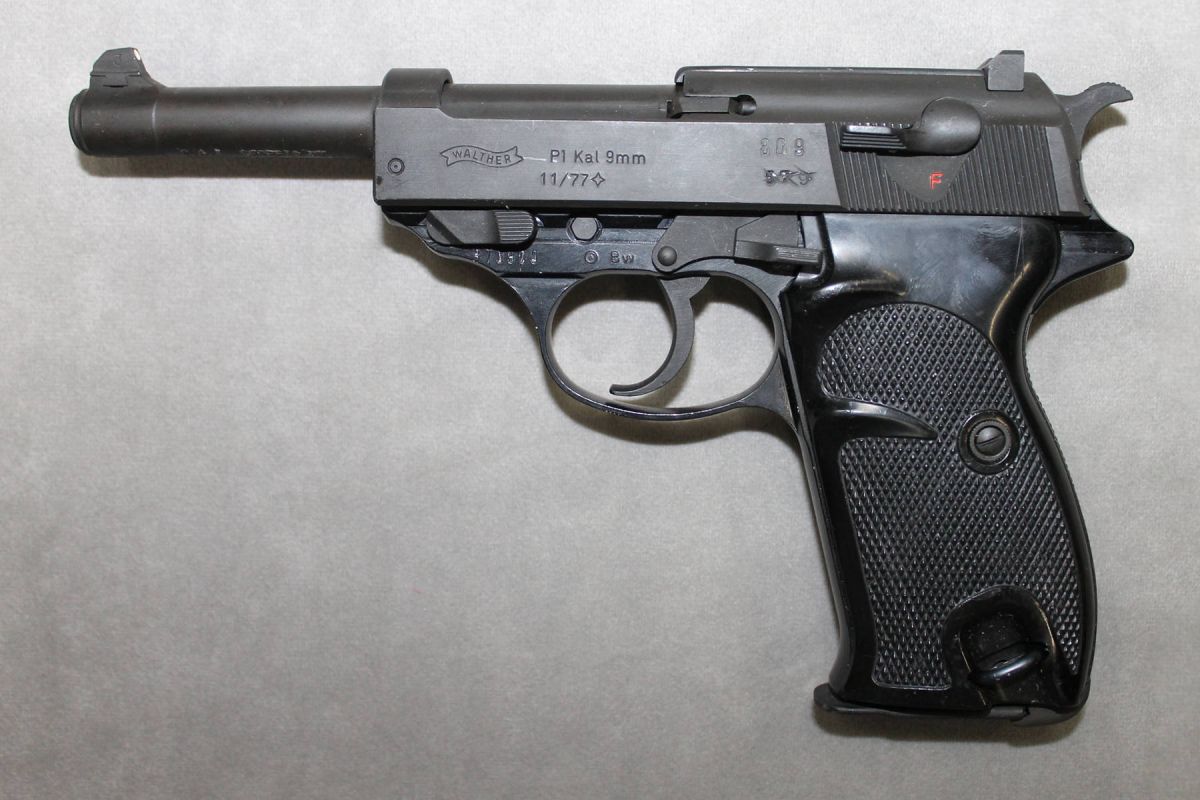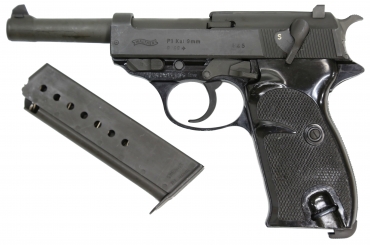

Many were rebuilt and given the slide and hex pin upgrades, and have since found their way to US shores as “obsolete” firearms. Eventually, the German military surplussed the P1. As a Cold War Warrior, it was carried often, but seldom used in anger.

More than one German soldier made a joke about "8 warning shots and one well-aimed throw". It served for about 30 years, but wasn't universally loved. The P1 was manufactured into the 1980s, with some additional upgrades along the way in the form of a beefier slide (known to collectors as the “fat slide”), and the installation of a strengthening “hex pin” where the pistol’s locking block engaged the frame. In addition to the aluminum alloy frame, the new P1 had larger, improved sights and a few other minor tweaks under the hood. This “new” pistol was given the moniker P1 in 1963. The P.38 had served the Wehrmacht well, so why couldn’t it serve the new Bundeswehr equally as well? Walther retooled and modified the venerable warhorse, giving it a lighter aluminum alloy frame vs. In a most un-German like move, instead of completely reinventing and over-engineering the wheel, the Germans went with what they already had. The Walther factory had been destroyed during the war, but the patents, know-how, and people were still around. Which finally brings us to the Walther P1.

Somewhere on that list for equipping and fielding that military was the need for a new sidearm.Įast German police clash with West German over a girl who dared cross the border. West Germany, as an essentially new country, needed many things, and with the prospect of a billion Commies pouring through the Fulda Gap at a moment’s notice, a competent military force was somewhere near the top of the list. Times had changed: where once the Soviets had been allies (of convenience, perhaps, but allies nonetheless), they were now the threat. By the mid 1950s, the world was deep into the Cold War. Out of the ashes and with a lot of Allied help, the Federal Republic of Germany (also known as West Germany) arose. By late 1945, Germany was divided, its infrastructure was in shambles from the Allied bombing campaigns, and its manufacturing capabilities had been completely obliterated. Thanks to the Allies, Germany went 0-2 in World Wars. P.38s were produced at three different locations during the war. Though the P.38 never really replaced the Luger, the Germans sure tried, because they made over a million of them from 1939 to 1945 in three different factories.Ī late war P.38, made in the Spreewerke factory. Like the Luger, the P.38's magazine held eight cartridges, and fired the 9mm Luger cartridge. Of course, after the first double-action pull, the pistol ejected the spent cartridge and loaded a fresh one from the magazine automatically, and the subsequent rounds were all fired single-action. Granted, it was a longer, heavier pull than the single action, but it was simple, and in a battlefield situation, Simple is Good.

This meant that a soldier could carry the P.38 with a round in the chamber, hammer down, safely, and all he had to do to get the pistol into action was pull the trigger. Secondly, the P.38 was one of the first double-action semi-auto pistols fielded to a military force. First, it was of course cheaper to manufacture. Especially when you’re gearing up to conquer Europe, and maybe the world ( which thankfully didn't turn out so well), you’ve probably got better things you could spend marks on.Īccepted by Germany in 1938 (hence the designation), the P.38 offered some significant advantages over the old Luger. And honestly, when it comes to winning battles and wars, pistols really have a small role to play (unless you’re Sergeant York, but he had balls the size of cantaloupes, and the marksmanship skills to go with them, which makes him the exception that proves the rule), so equipping your armed forces with hand-fitted, expensive pistols doesn’t make much sense. See, the Luger, fine pistol and incredible example of Old World craftsmanship as it was, simply was too labor intensive and therefore too expensive to produce. The Germans were looking for a military side arm to replace the legendary P.08 Luger pistol. The P.38 has its roots in pre-war Nazi Germany. Though it needs no introduction, for the benefit of the uninitiated I'll go into some detail here.


 0 kommentar(er)
0 kommentar(er)
